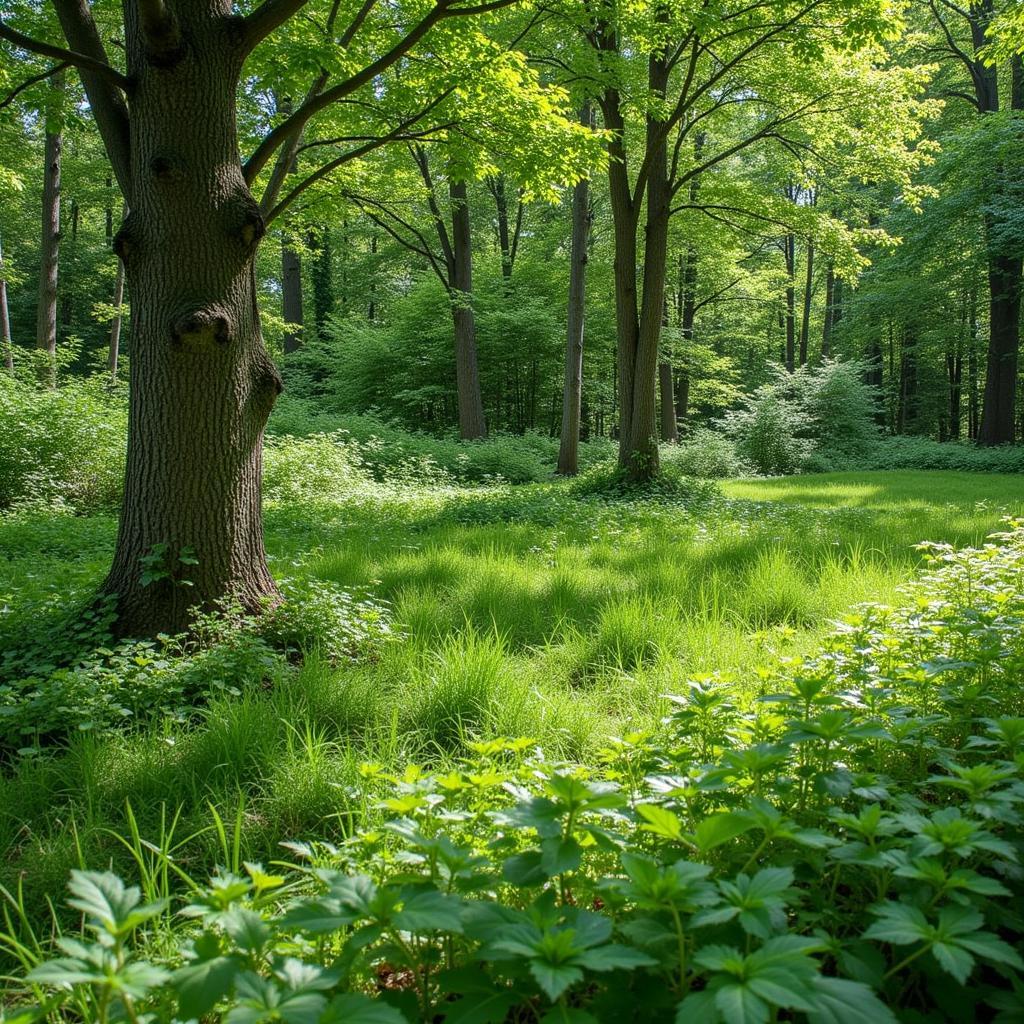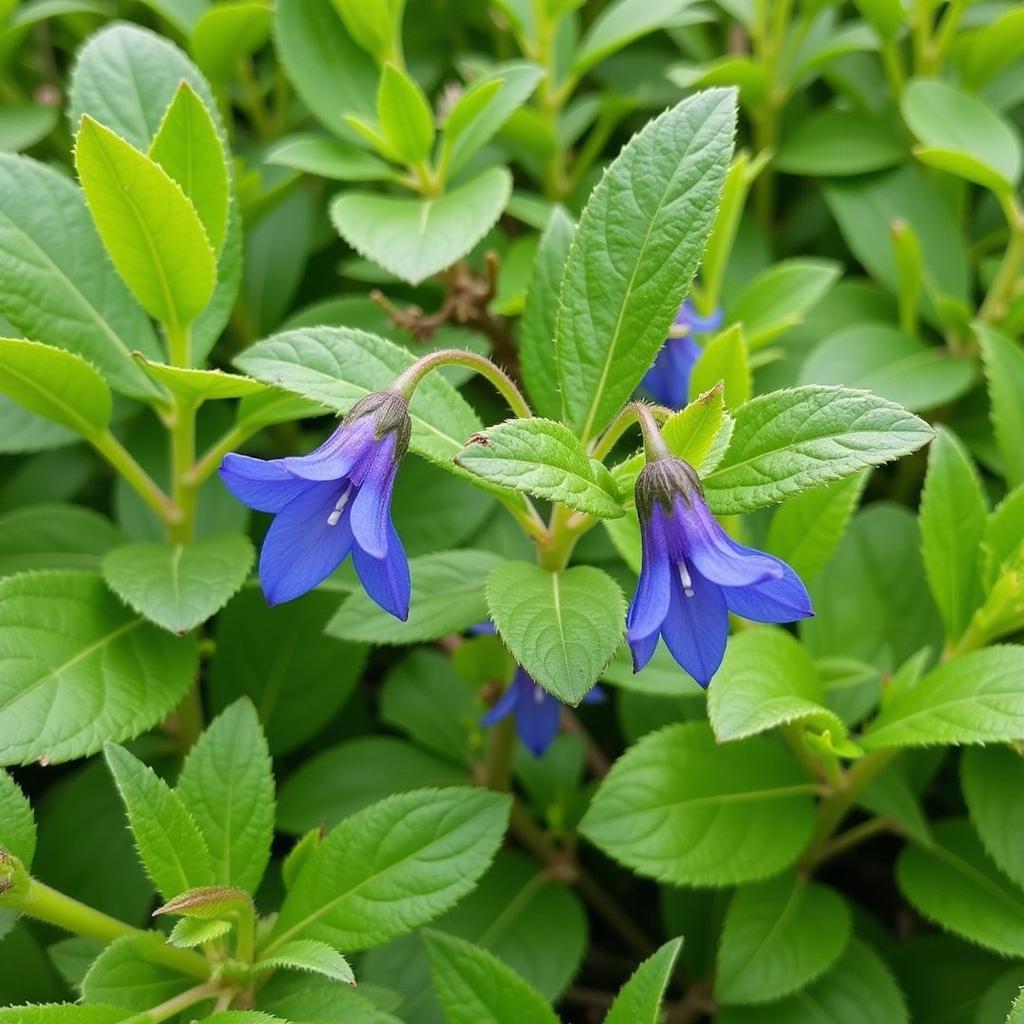Choosing the Best Shade Food Plot Seed can be the difference between a bustling food plot and a disappointing patch of dirt. Shady areas present unique challenges for growing successful food plots, but with the right seed selection and a bit of know-how, you can create a haven for wildlife even under the canopy. Whether you’re dealing with the dappled sunlight filtering through a mature forest or the dense shade of a pine plantation, this guide will equip you with the knowledge to cultivate a flourishing food plot in the shadows.
Understanding Shade Tolerance in Food Plot Species
Before diving into specific seed recommendations, it’s crucial to understand the concept of shade tolerance. Just like some plants thrive in bright, sunny conditions, others have adapted to flourish in lower light environments.
- Full Sun vs. Partial Shade vs. Full Shade: Seed packets will often indicate the amount of sunlight a particular plant needs. “Full sun” typically means 6 hours or more of direct sunlight, while “partial shade” indicates 4-6 hours. “Full shade” species can handle less than 4 hours of direct sunlight.
- Dappled Sunlight: Don’t despair if your plot doesn’t perfectly fit these categories. Dappled sunlight, common in forested areas, can be sufficient for many “partial shade” species.
 Shade-Tolerant Food Plot
Shade-Tolerant Food Plot
Top Shade Food Plot Seed Choices
When selecting shade food plot seed, prioritize species known for their resilience and attractiveness to deer and other wildlife:
1. Clover: A top choice for shade, clover varieties like Ladino and White Dutch clover offer excellent palatability and can withstand moderate shade. They are also relatively easy to establish.
2. Chicory: This hardy perennial tolerates shade and drought conditions well, making it a valuable addition to shade plots. Its deep taproot allows it to access moisture even in dry periods.
 Chicory in Shade Food Plot
Chicory in Shade Food Plot
3. Brassicas: While not all brassicas are shade-tolerant, turnips and rape can tolerate partial shade, especially during the early stages of growth. They provide a nutritious food source in the fall and winter.
4. Austrian Winter Peas: As a cool-season annual, Austrian Winter Peas are an excellent choice for fall planting in shaded areas. They offer high protein content, making them attractive to deer and other wildlife.
5. Alfalfa: In areas with well-drained soil and some dappled sunlight, alfalfa can be a productive choice. Its deep roots make it drought-tolerant, and it provides a high-protein food source.
Tips for Successful Shade Food Plots
Selecting the right seed is only the first step. Follow these tips to ensure your shade food plot thrives:
-
Soil Testing is Key: Just like with any food plot, understanding your soil pH and nutrient levels is crucial for choosing the right seed and fertilizer.
-
Sunlight Analysis: Observe your plot throughout the day to determine the actual amount of sunlight it receives. This will help you fine-tune your seed selection.
-
Proper Seedbed Preparation: Clear any competing vegetation and create a well-tilled seedbed. Consider a soil test to determine if lime or fertilizer amendments are necessary.
-
Planting Depth and Timing: Follow the recommended planting depths and dates on seed packets carefully. In general, fall plantings are more forgiving in shaded areas.
-
Weed Control: Weeds can quickly choke out young food plot seedlings, especially in low-light conditions. Implement a weed control strategy to give your plot the best chance of success.
Don’t Let Shade Limit Your Food Plot Potential
Creating a successful shade food plot might require a bit more planning and attention to detail, but the rewards are well worth the effort. By choosing the best shade food plot seed for your region and following these tips, you can transform even the shadiest corners of your property into flourishing feeding grounds for wildlife.
FAQs About Shade Food Plots
1. Can I plant a food plot under pine trees?
Yes, but it can be challenging due to the dense shade and acidic soil. Opt for acid-tolerant species like clover, chicory, and brassicas.
2. When is the best time to plant a shade food plot?
Early fall is generally the optimal time for planting shade food plots, as the soil is still warm, and there is less weed pressure.
3. Do I need to fertilize my shade food plot?
A soil test will reveal if your soil is lacking essential nutrients. In many cases, lime and fertilizer applications can significantly improve food plot success.
4. How can I improve drainage in a shady food plot?
Adding organic matter like compost can help improve drainage. In areas with heavy clay soil, consider creating raised beds.
5. What if my shade food plot doesn’t receive any direct sunlight?
Very few food plot species can thrive with absolutely no direct sunlight. Focus on maximizing dappled sunlight by selectively pruning trees if possible.
Need More Help?
For personalized advice on designing and planting the perfect shade food plot, contact our team at Mina Cones Food. We offer a range of resources, including our deer food plot design guide and a selection of high-quality mossy oak food plot seed.
Find more information about deer food plots:
Let Mina Cones Food help you create a thriving wildlife habitat, even in the shade! You can reach us at 02437655121, email us at minacones@gmail.com, or visit our store at 3PGH+8R9, ĐT70A, thôn Trung, Bắc Từ Liêm, Hà Nội, Việt Nam. Our dedicated customer support team is available 24/7 to assist you.